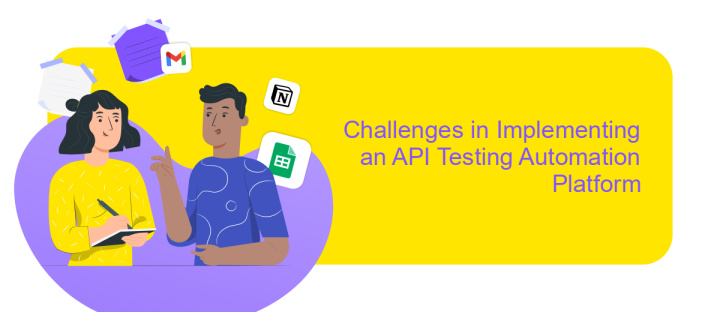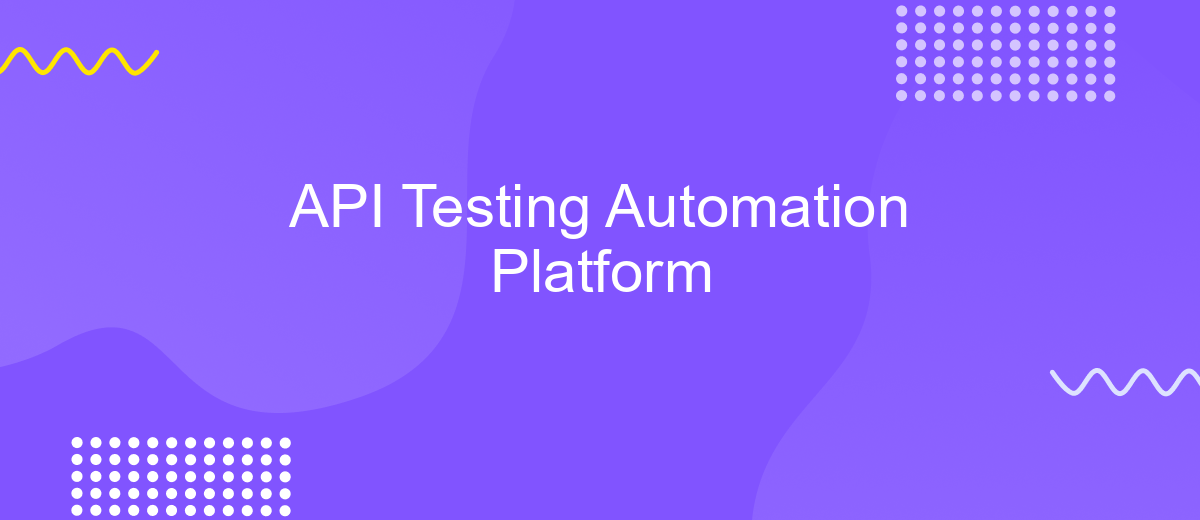API Testing Automation Platform
In today's fast-paced digital landscape, ensuring the reliability and performance of APIs is crucial for seamless user experiences. An API Testing Automation Platform empowers developers and QA teams to efficiently validate API functionality, performance, and security. By automating repetitive testing tasks, these platforms streamline the development process, reduce human error, and accelerate time-to-market, ultimately leading to more robust and dependable software solutions.
Introduction to API Testing Automation Platform
API Testing Automation Platform is a crucial component in the modern software development lifecycle. As applications become more complex, the need for efficient and reliable testing of APIs has grown exponentially. This platform allows developers and testers to automate the testing process, ensuring that APIs function correctly and meet specified requirements. By automating API tests, teams can quickly identify issues, reduce manual testing efforts, and accelerate the release cycle.
- Streamlines the testing process by automating repetitive tasks.
- Enhances test coverage and accuracy with minimal human intervention.
- Facilitates continuous integration and delivery by integrating with CI/CD pipelines.
- Provides detailed reporting and analytics for better decision-making.
- Supports multiple API protocols, including REST, SOAP, and GraphQL.
Implementing an API Testing Automation Platform brings numerous benefits to organizations. It not only improves the reliability and performance of APIs but also empowers teams to focus on innovation rather than mundane testing tasks. As a result, businesses can deliver high-quality software products faster and with greater confidence, ultimately enhancing customer satisfaction and competitive advantage.
Benefits of Using API Automation Platform

Implementing an API automation platform offers numerous advantages for developers and businesses alike. Firstly, it significantly enhances efficiency by automating repetitive testing processes, reducing the time and effort required for manual testing. This allows teams to focus on more complex tasks and innovations, thus accelerating the development cycle. Additionally, automated testing ensures consistent and reliable results, minimizing human error and increasing the accuracy of test outcomes. This reliability is crucial for maintaining the integrity of applications and ensuring a seamless user experience.
Moreover, using an API automation platform facilitates seamless integration with various tools and services, streamlining workflows and enhancing productivity. For instance, platforms like ApiX-Drive enable users to effortlessly connect different applications, automating data transfers and processes without extensive coding knowledge. This ease of integration not only saves time but also reduces operational costs by minimizing the need for manual intervention. Furthermore, the scalability of API automation platforms allows businesses to adapt quickly to changing requirements and demands, ensuring they remain competitive in a rapidly evolving digital landscape.
Key Features of a Comprehensive API Testing Automation Platform

A comprehensive API testing automation platform is essential for ensuring the reliability and performance of APIs in today's interconnected digital landscape. These platforms provide a robust framework for developers and testers to efficiently validate API functionality, security, and performance. By automating repetitive testing tasks, they help teams deliver high-quality software faster and with greater confidence.
- Extensive Protocol Support: The platform should support a wide range of protocols like REST, SOAP, GraphQL, and more, catering to diverse API architectures.
- Automated Test Generation: It should offer tools to automatically generate test cases based on API specifications, reducing manual effort and ensuring comprehensive coverage.
- Continuous Integration/Continuous Deployment (CI/CD) Integration: Seamless integration with CI/CD pipelines allows for automated testing at every stage of the development lifecycle.
- Robust Reporting and Analytics: Detailed reports and analytics help teams quickly identify issues and track API performance over time.
- Security Testing: Built-in capabilities for security testing ensure that APIs are protected against vulnerabilities and threats.
These key features empower development teams to streamline their API testing processes, ultimately enhancing software quality and accelerating delivery timelines. By leveraging such platforms, organizations can maintain competitive advantage in a rapidly evolving technological environment.
Challenges in Implementing an API Testing Automation Platform

Implementing an API testing automation platform presents several challenges that organizations need to address for successful deployment. One of the primary hurdles is ensuring compatibility with existing systems and workflows. Integrating a new platform into an established infrastructure can require significant time and resources, especially if legacy systems are involved.
Another challenge is maintaining the reliability and accuracy of tests. As APIs evolve, tests must be updated to reflect changes, which requires continuous monitoring and adjustments. Without proper maintenance, tests can become outdated, leading to false positives or negatives that undermine confidence in the testing process.
- Ensuring comprehensive test coverage across diverse API endpoints.
- Managing the complexity of test data setup and teardown.
- Handling authentication and authorization challenges securely.
- Integrating with CI/CD pipelines for seamless deployment.
Overcoming these challenges requires a strategic approach, including investing in robust tools and skilled personnel. Organizations must prioritize training and development to equip their teams with the necessary skills to manage and adapt to evolving API testing needs. By addressing these challenges, businesses can leverage API testing automation to enhance software quality and accelerate development cycles.


Best Practices for Effective API Testing Automation
To ensure effective API testing automation, it's crucial to start with a well-defined strategy. Begin by identifying the most critical APIs that require testing and prioritize them based on their business impact. Use a data-driven approach to design test cases, ensuring they cover a wide range of scenarios, including edge cases. Implement version control for test scripts to maintain consistency and facilitate collaboration among team members. Regularly update and refactor these scripts to adapt to changes in the API or business logic.
Integrating your API testing tools with a CI/CD pipeline is essential for seamless automation. This integration allows for continuous testing, providing immediate feedback on API performance and reliability. Tools like ApiX-Drive can be beneficial in setting up these integrations efficiently, enabling automated workflows and data synchronization across different platforms. Additionally, ensure that your testing environment mirrors production as closely as possible to detect potential issues early. Finally, maintain comprehensive documentation of your test cases and results, which aids in troubleshooting and continuous improvement of the testing process.
FAQ
What is API testing automation and why is it important?
How can I get started with API testing automation?
What tools are commonly used for API testing automation?
How can I integrate API testing automation into my existing workflow?
What are some best practices for API testing automation?
Apix-Drive is a universal tool that will quickly streamline any workflow, freeing you from routine and possible financial losses. Try ApiX-Drive in action and see how useful it is for you personally. In the meantime, when you are setting up connections between systems, think about where you are investing your free time, because now you will have much more of it.

